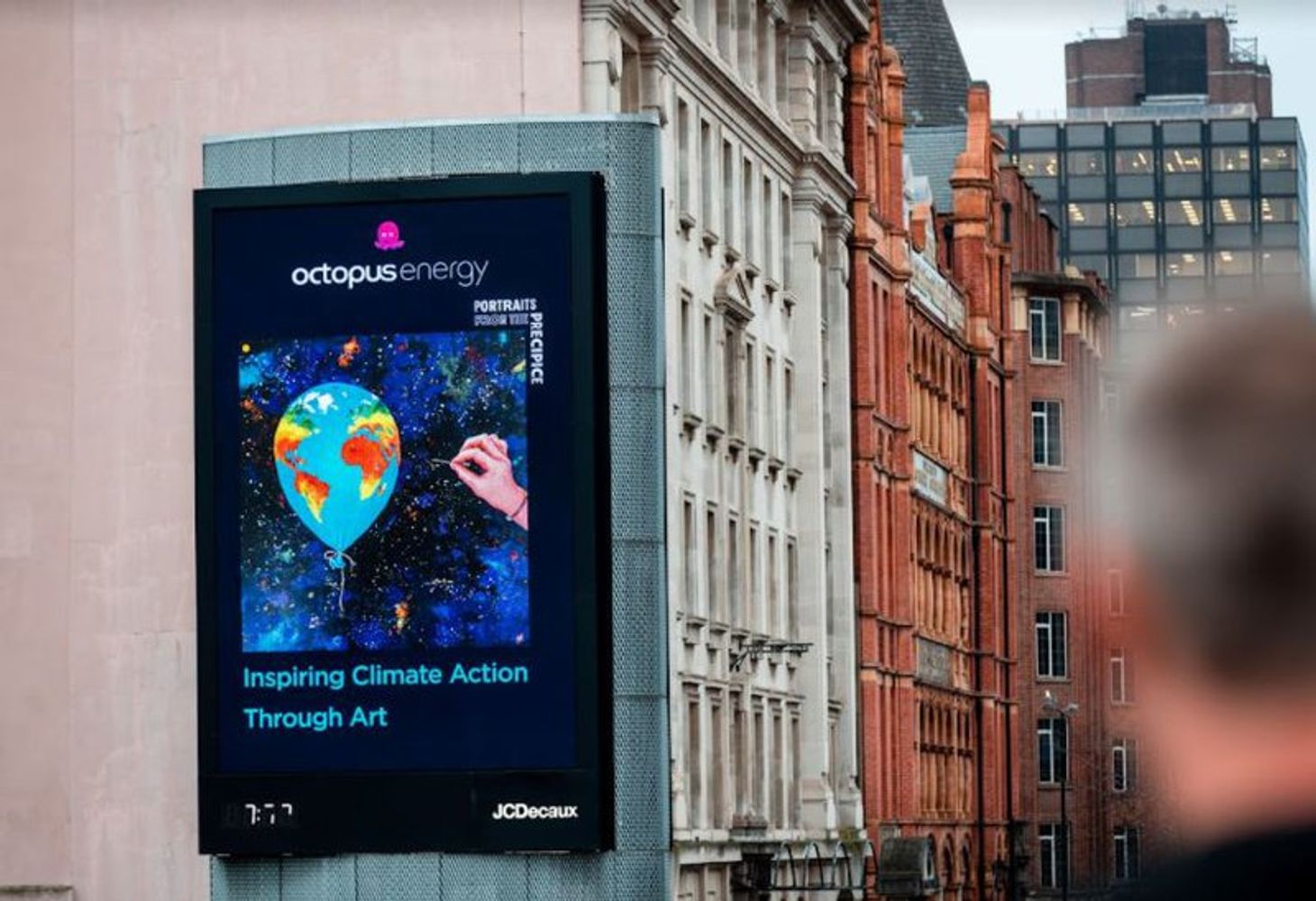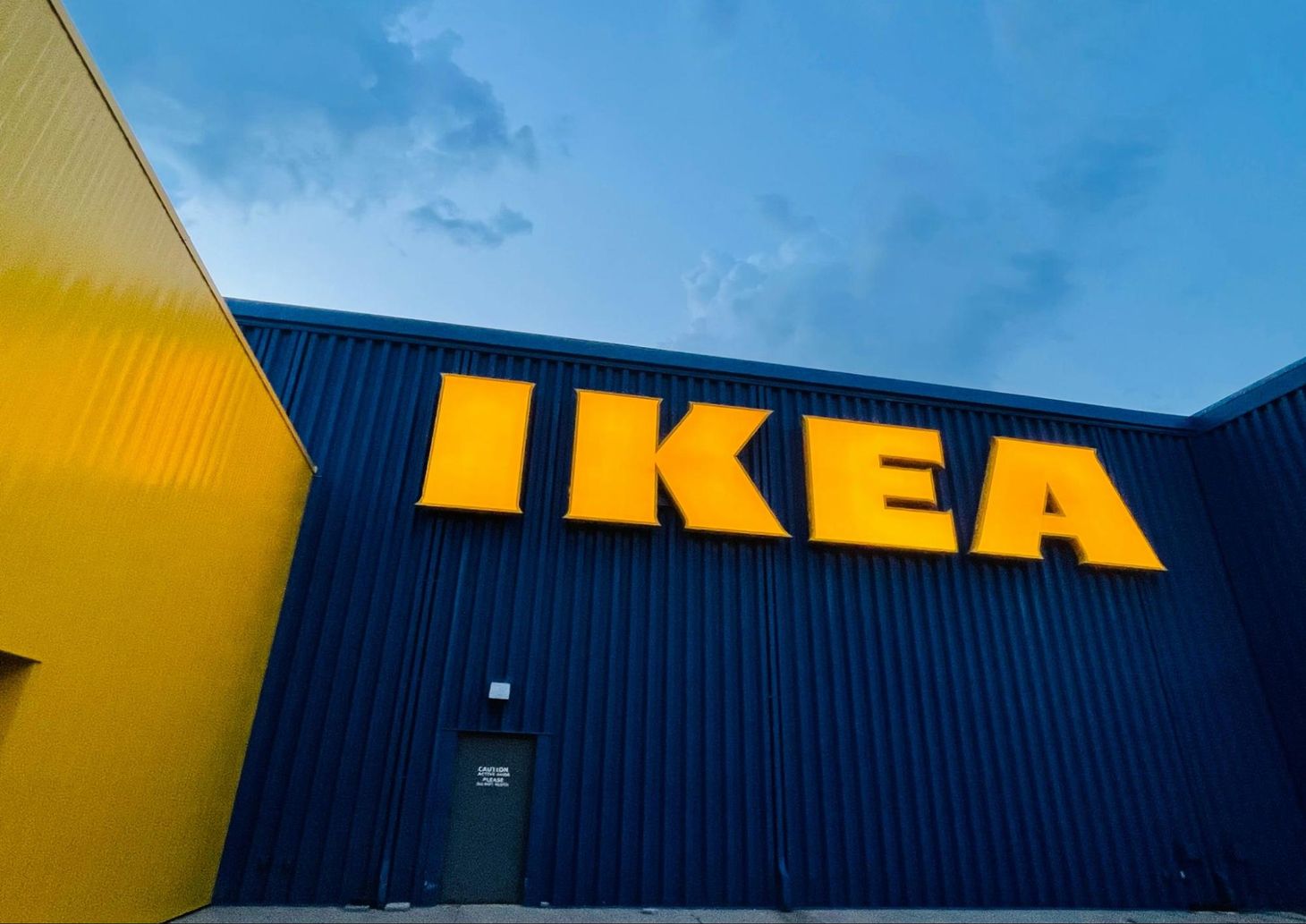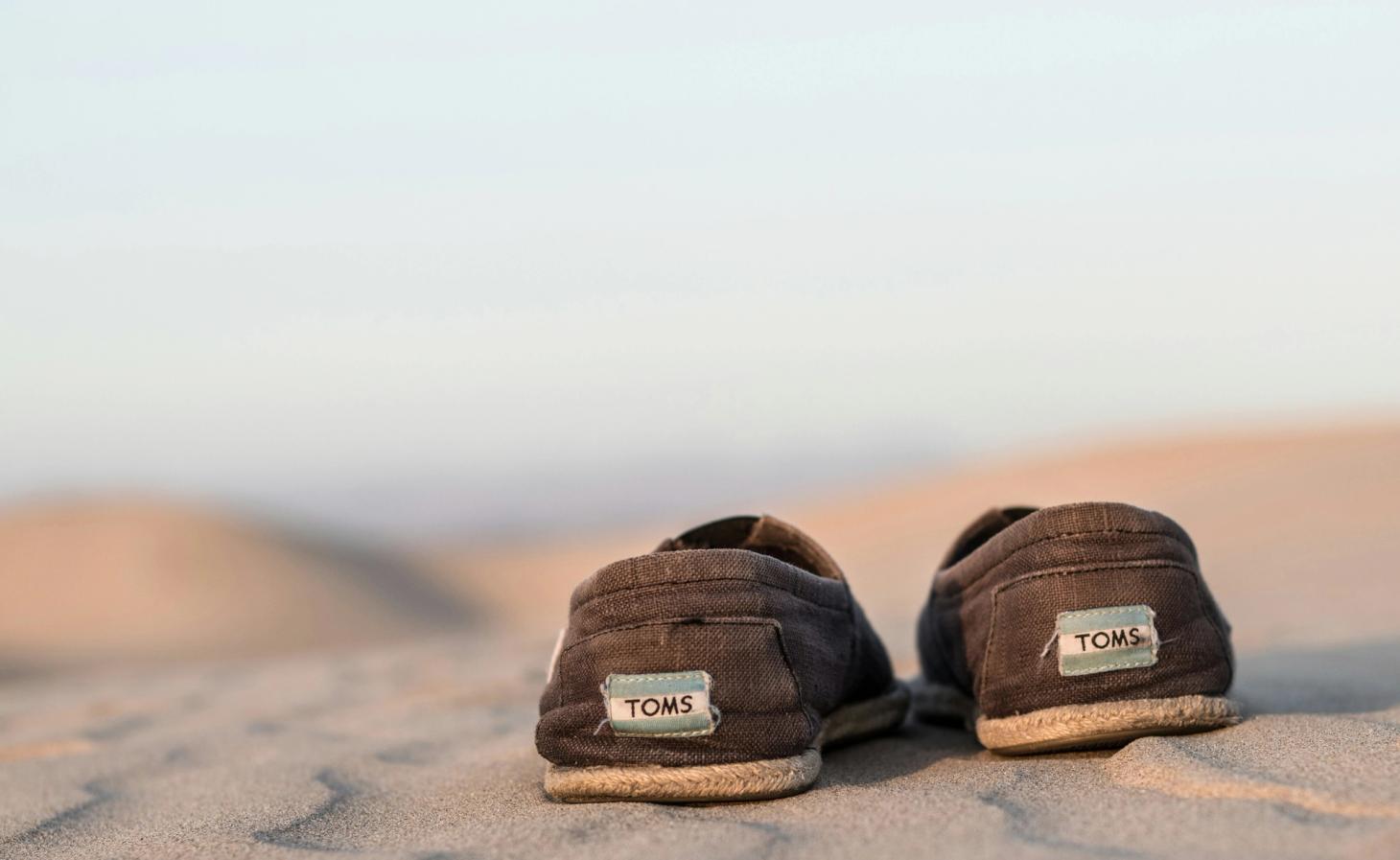Brand purpose is more than a buzzword. It’s the backbone of modern brand strategy - the reason a brand exists beyond making money. In an era of cultural shifts, climate crises, and rising consumer expectations, a compelling brand purpose helps companies stay relevant, connect with audiences, and drive sustainable growth.
Brands with purpose outperform their competitors, attract better talent, and build deeper loyalty with customers. But defining a meaningful purpose is no small feat. It requires introspection, strategy, and, above all, action.
If you're just here for examples, skip ahead to our top 10 brand purpose examples. Otherwise, let’s dive in.
What Is Brand Purpose?
Brand purpose is a company’s reason for being that goes beyond profit. It defines how a brand contributes to society and shapes its products, operations, culture, and communications.
Unlike a mission statement that outlines what a business does, or a vision statement that describes where it's headed, brand purpose is about why it exists. It’s an ethos that influences everything from product design to partnerships, marketing campaigns to hiring practices.
“Brand purpose is not a marketing message. It’s a business imperative.”
It’s also one of the most powerful tools in your branding toolkit, enabling stronger emotional connections and long-term customer loyalty.
Why Is Brand Purpose Important?
Brand purpose isn’t just a moral choice, it’s a commercially strategic one. Businesses that successfully integrate purpose into their core operations don’t just gain positive PR; they see measurable financial benefits, stronger brand equity, and long-term resilience in an increasingly uncertain marketplace.
1. Purpose-Driven Brands Grow Faster
Multiple studies have confirmed that companies with a clear brand purpose experience higher growth rates compared to those without one. Research from Kantar found that purpose-driven brands grow twice as fast as competitors, while a global survey by Zeno Group revealed that 94% of consumers say they are more likely to be loyal to brands that take a stand on social or environmental issues.
Why? Because in a saturated market, customers and businesses don’t just buy based on features or pricing, they buy into values, beliefs, and trust. A strong brand purpose gives businesses a competitive advantage by making them more relevant, more memorable, and more emotionally resonant.
2. Purpose Strengthens Customer Relationships and Loyalty
In both B2B and B2C markets, brand purpose builds deeper relationships with audiences. Customers today, whether individuals or large corporations, are actively choosing brands that align with their personal and corporate values. If a brand’s purpose aligns with their customers’ priorities, those customers are more likely to remain loyal, advocate for the brand, and increase their long-term engagement.
Take Microsoft, for example. The tech giant has successfully embedded purpose into its core business strategy, with a strong commitment to sustainability, accessibility, and ethical technology. This has helped Microsoft position itself as a trusted leader in the industry, influencing enterprise decision-makers who want to work with partners that prioritise ethical and responsible business practices.
3. Purpose Increases Employee Satisfaction and Retention
Purpose isn’t just about external branding; it plays a crucial role in shaping internal culture and employee engagement. Companies with a clear purpose statement attract and retain better talent because people want to work for organisations that stand for something meaningful.
According to a Deloitte survey, 73% of employees who work for a company with a strong purpose say they feel highly engaged, compared to just 23% at companies without one. High-quality talent is increasingly drawn to businesses that prioritise ethical practices, sustainability, and corporate responsibility.
For businesses, this means lower turnover rates, higher productivity, and a workforce that is genuinely invested in the company’s long-term vision.
4. Purpose Helps Navigate Crisis and Maintain Trust
A strong brand purpose provides businesses with resilience during times of crisis. Whether it’s an economic downturn, a PR issue, or industry-wide disruptions, companies with a well-established purpose are better positioned to maintain customer trust and loyalty.
During the COVID-19 pandemic, Unilever doubled down on its brand purpose, ensuring that it prioritised people over profits by donating millions of hygiene products, supporting small businesses, and launching sustainability initiatives. This reinforced its reputation as a brand that genuinely cares, securing long-term goodwill and trust even in difficult times.
5. Purpose-Driven Brands Attract Investment
Investors are increasingly looking at Environmental, Social, and Governance (ESG) factors when deciding where to put their money. A company’s brand purpose plays a huge role in this, as businesses that prioritise sustainability and ethical responsibility are seen as lower-risk, more forward-thinking investments.
Companies like Patagonia, which align their entire business model around a clear brand purpose, continue to attract investment at staggering rates because they position themselves as leaders in an industry that is evolving toward sustainability.
6. Purpose Enhances Marketing and Storytelling
From a marketing perspective, brand purpose is one of the most powerful storytelling tools a company can have. A compelling, purpose-driven narrative gives brands the ability to create:
- More engaging marketing materials that resonate with their audience.
- Stronger emotional connections that drive loyalty and long-term relationships.
- Higher-quality thought leadership content that positions them as industry pioneers.
When B2B businesses leverage brand purpose in their content marketing and advertising strategies, they create more meaningful connections with decision-makers who are looking for brands that align with their values. This is especially relevant in B2B branding, where differentiation is often more challenging due to the technical nature of products and services.
B2B vs B2C: Who Needs Brand Purpose More?
Although brand purpose is often linked with consumer-facing companies, B2B brands need it just as much, if not more.
B2B buyers aren’t just making rational decisions. They’re people, too. A clear purpose:
- Differentiates your brand in technical markets
- Aligns values with long-term clients
- Attracts talent in competitive industries
- Builds credibility in thought leadership
As Don’t Panic London has shown with B2B giants like YouTube, purpose-led messaging works across every sector, not just consumer brands.
How to Develop Your Brand Purpose
Creating a credible and commercially valuable brand purpose takes strategic clarity and cultural alignment. Here’s a step-by-step approach:
1. Define Your Brand DNA
Your brand purpose must be rooted in truth. Start by asking:
- Why did we start this business?
- What do our people believe in?
- What would the world miss if we disappeared?
- What impact do we want to have?
Avoid reverse-engineering your purpose for PR. Authenticity is non-negotiable.
2. Identify the Bigger Problem You Solve
Great brand purpose goes beyond your products. Ask:
- What societal or environmental shift can we influence?
- What are our customers struggling with?
- Where do we have the credibility to make a difference?
Your purpose should sit at the intersection of business strategy, customer needs, and cultural relevance.
3. Align Purpose with Business Strategy
A strong purpose must be actionable and measurable. Make sure it:
- Drives commercial goals
- Integrates into day-to-day operations
- Shapes ESG and innovation strategy
- Has senior stakeholder buy-in
Fact: 89% of executives say purpose matters, but only 46% integrate it into their strategy (Harvard Business Review).
4. Communicate with Consistency and Integrity
Your audience doesn’t want empty statements - they want action. So:
- Show, don’t just say
- Use case studies, storytelling, and social proof
- Engage employees first - brand purpose starts inside
5. Measure and Evolve
Brand purpose must evolve. Track:
- Customer sentiment
- Employee engagement
- ESG metrics
- Commercial performance
Stay flexible. Purpose should guide, not limit, your growth.
Brand Purpose Examples

1. Patagonia – “We’re in business to save our home planet.”
Industry: Outdoor Apparel
Purpose Theme: Environmental activism
Patagonia stands as one of the most iconic examples of a purpose-driven brand. Its founder, Yvon Chouinard, did not build the company to simply sell jackets. He built it to protect the natural world.
The brand's purpose, saving our home planet, is not just a marketing phrase; it is a commercial and cultural philosophy that has driven decades of environmental action. In 2022, Chouinard transferred ownership of the company to a trust and nonprofit dedicated to climate solutions. The move ensures that approximately £80 million in annual profits go directly to supporting environmental causes (New York Times).
Key Initiatives:
- Environmental Grants Programme: Donates to grassroots activists around the world.
- Worn Wear: A resale and repair initiative to extend product lifespan.
- Responsible Supply Chain: Organic cotton, fair labour, and strict environmental audits.
- Legal Action: Patagonia has actively sued the U.S. government over reduced land protections.
Unlike brands that tiptoe around political issues for fear of alienating customers, Patagonia has proven that standing firmly for something builds stronger brand loyalty than trying to appeal to everyone. Patagonia proves that an unshakable commitment to purpose can drive loyalty, profitability, and long-term brand equity.
Interested in learning more about branded content? Read this article on purpose-driven branding.
2. Bodyform (Libresse) – Challenging Taboos Around Periods and Pain

Industry: Feminine Care
Purpose Theme: Women’s health, honesty, education
For years, the sanitary product industry avoided real conversations about menstruation. Bodyform disrupted that silence. Its brand purpose is rooted in giving voice to the lived experiences of people who menstruate, bringing previously stigmatised issues into public discourse.
Bodyform’s breakthrough #BloodNormal campaign was in 2017 the first mainstream ad to show red, not blue, menstrual blood. This campaign sent shockwaves through the industry, with Bodyform stating: “Periods are normal. Showing them should be too.”
Their award-winning Womb Stories and Pain Stories campaigns addressed miscarriage, menopause, and endometriosis using striking visual narratives and animation.
Key Results:
- #BloodNormal won a Cannes Glass Lion for Change.
- Bodyform saw double-digit increases in brand trust and advocacy.
- Womb Stories received over 100 million views globally.
This is not brand purpose as CSR. It is baked into every touchpoint, packaging, social campaigns, education, and policy advocacy. Bodyform has become synonymous with progressive, human-centred branding.
3. Octopus Energy – Making Energy Fair, Clean and Simple

Industry: Utilities
Purpose Theme: Renewable energy, consumer fairness
In a market notorious for poor customer service and complex tariffs, Octopus Energy has built its success around simplicity, transparency, and sustainability. From day one, it has offered 100 percent renewable electricity to every household.
Their proprietary Kraken platform automates customer service, reduces operational waste, and supports rapid scaling, all while lowering costs. Rather than relying on offsets, Octopus is investing in real infrastructure, including wind and solar farms across the UK and Europe.
Achievements:
- Now serves over five million UK homes.
- Ranked “Which? Recommended Provider” for six consecutive years.
- Expanded into 17 countries.
Octopus doesn’t talk about purpose - it operationalises it. Their customer-first model has built a loyal community by providing exceptional support, transparent billing, and simple, jargon-free communication, proving that ethical business can be profitable at scale.
4. Rubies in the Rubble – Fighting Food Waste, One Sauce at a Time

Industry: Food and Beverage
Purpose Theme: Food sustainability
Rubies in the Rubble turns surplus produce, often discarded due to size or shape, into award-winning condiments. Their brand purpose is rooted in reducing the environmental cost of food waste, while proving that ethical food can be premium food.
Rubies in the Rubble understands that purpose isn’t just about what you sell—it’s about what you stand for. That’s why the brand has been at the forefront of consumer education on food waste, using its platform to spark conversations, drive change, and influence both consumers and businesses to rethink their food habits.That’s why every Rubies in the Rubble product highlights its role in reducing waste, reinforcing the brand’s mission at the point of purchase.
Purpose in Practice:
- Ingredients sourced from farms and wholesalers that would otherwise throw produce away.
- Transparent messaging on packaging about food waste and sustainability.
- Partnerships with supermarkets and schools to drive education.
Recognition:
- Sold in Selfridges, Ocado, Waitrose, and Sainsbury’s.
- Millions of kilos of food saved from landfill.
- Winner of the Sustainable Food Awards.
Through these efforts, the brand has positioned itself as not just a product, but a movement - one that empowers consumers to take action against food waste in their own lives. Their success proves that consumers are ready to support purpose-led food brands, especially those who lead with taste and transparency.
5. Cushon – Sustainable Saving for a Net-Zero Future

Industry: Financial Services
Purpose Theme: Ethical finance, sustainability
Finance is one of the last industries you’d associate with brand purpose, but Cushon has flipped the script. Its purpose is to demystify pensions while aligning employee savings with environmental responsibility.
Their launch of the world’s first net-zero pension gives employers and staff a credible way to align retirement investments with climate goals. The platform’s UX is friendly and intuitive, helping users engage with their savings journey.
As our founder, Joe Wade, puts it:
“Cushon is a great example of a brand that understands its audience’s emotional landscape and uses brand purpose as a tool to reduce friction, inspire confidence, and build trust. They’re proof that even in highly regulated, ‘dry’ categories like finance, there’s massive power in showing you give a damn.”
We believe Cushon represents a new wave of B2B brands who don’t see purpose and profitability as opposing forces. Instead, they use purpose to drive better products, stronger brand affinity, and long-term business growth.
Key Impacts:
- More than 1 million members.
- Featured in The Guardian, The FT, and ESG-focused investment press.
- 60 percent increase in workplace engagement among users.
This is what B2B brand purpose looks like: not fluff, but functional innovation that changes lives and markets.
6. LEGO – Inspiring the Builders of Tomorrow

Industry: Toys and Education
Purpose Theme: Creativity, education, sustainability
LEGO’s brand purpose, to inspire and develop the builders of tomorrow, is embedded in everything from their brick design to their global education initiatives. But it’s their commitment to sustainability and social impact that’s made them a purpose leader.
- By 2032, all LEGO products will be made from sustainable materials, including sugarcane-based plastics (Bloomberg)
- The LEGO Foundation invests 25 percent of LEGO’s profits into learning through play, focusing on underserved children.
- They’ve committed to net-zero emissions by 2050 across their supply chain.
Don’t Panic x LEGO:
We actually worked with Greenpeace, to help break up a multi-million-pound partnership between Lego and Shell as part of their global ‘Save the Arctic’ campaign.
They were struggling to engage new audiences, so we needed to build an emotional connection with the issue underpinned by empathy rather than outrage. ‘LEGO: Everything is NOT Awesome’ used an epic diorama packed with pop culture ‘easter eggs’ to engage audiences outside of Greenpeace’s core supporter base.
The film drummed up so much attention, it was reported and taken down from YouTube. But this only added fuel to the fire, with existing viewers pushing back and re-uploading across sites like Reddit and Vimeo - and giving journalists across the UK something to write about! By harnessing and turning the cultural heft of LEGO on itself, we also caught the attention of LEGO fans - putting pressure on the toy company and leaving them no choice but to take notice. Watch it here!
LEGO demonstrates that legacy brands can lead cultural and environmental change without losing their core identity.
7. IKEA – Creating a Better Everyday Life for the Many

Industry: Retail
Purpose Theme: Circular economy, climate action
IKEA’s purpose is to make sustainability affordable and accessible. Their goal? Become climate positive by 2030 while continuing to serve millions worldwide.
Key actions include:
- Buy-back schemes for old furniture, encouraging circular consumption.
- A move to 100 percent renewable energy across global operations.
- Replacing all virgin plastic with recycled or renewable alternatives by 2030.
IKEA also invests in urban farming, inclusive employment, and zero-waste design. This is purpose in action at global scale - tangible, measurable, and mission-critical.
8. YouTube (B2B) – Bringing Human Emotion Back to Media

Industry: Media and Tech
Purpose Theme: Creative empowerment
Official Campaign: This Is My YouTube
At Don’t Panic, we helped YouTube reconnect with advertisers who had begun to take the platform for granted or were put off by reputational challenges. Our strategy was simple: remind decision-makers why YouTube holds a special place in their lives, not just as marketers, but as individuals.
To do this, we created a content-led campaign inspired by Desert Island Discs, where key industry figures shared their creative journeys through YouTube content. Rather than simply telling advertisers why YouTube mattered, we let them experience it in an engaging and memorable way.
The results spoke for themselves:
- 37% video completion rate
- 7.2% increase in brand sentiment
- 50% average view rate
This campaign proved that when a brand truly understands its audience and speaks to them on an emotional level, the impact is far greater than any corporate sales pitch.
9. Tony’s Chocolonely – 100% Slave-Free
Chocolate

Industry: Confectionery
Purpose Theme: Ethical sourcing, human rights
Tony’s Chocolonely was founded on a single principle: eradicate modern slavery in cocoa farming. It is more than a chocolate brand. It’s a social justice movement disguised as a sweet treat.
- Their supply chain is fully traceable and built on direct farmer partnerships.
- The brand uses its bold, uneven chocolate bars to represent inequality in the industry.
- They publish annual Fair Report Cards and push competitors to join their open-source model.
Tony’s isn’t just a good chocolate brand. It’s a good brand, full stop and a blueprint for ethical business in exploitative industries.
10. TOMS – Using Business to Improve Lives

Industry: Footwear and Apparel
Purpose Theme: Community impact, mental health
Originally known for its “One for One” shoe donations, TOMS has since evolved its purpose to focus on broader community impact.
Today, one-third of TOMS’ profits go toward grassroots mental health organisations, youth development, and equity advocacy moving beyond its original “One for One” model (Fast Company). The brand no longer positions itself as a charity, but as a purpose-led business with measurable community outcomes.
Key Features:
- Clear reporting on donation impact
- Products that still align with the “buy to do good” ethos
- Commitment to long-term, rather than one-off, aid
By evolving with cultural expectations, TOMS demonstrates that brand purpose must remain responsive, not static.
Final Thoughts: Brand Purpose Is a Long Game
A genuine, well-executed brand purpose doesn’t just improve brand perception, it transforms businesses. Companies that embrace purpose authentically build stronger customer relationships, attract better talent, and create a lasting positive impact on society.
For brands looking to refine their purpose, the key takeaways are clear:
- Make purpose part of your core business strategy, not just marketing.
- Ensure it’s authentic and aligned with your industry.
- Think long-term - consistency is key.
- Engage your audience in a way that’s meaningful and memorable.
At Don’t Panic London, we specialise in helping brands craft compelling, purpose-driven narratives that cut through the noise. Whether you’re looking to reposition your brand or create a campaign that drives real impact, we can help.
Discover how a purpose-driven marketing agency can help your brand connect, inspire, and grow. Explore our purpose-led marketing services today.
Need support defining your brand purpose? Check out our expertise in purpose-driven marketing or get in touch.




